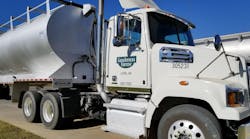The pace of pay increases for truck drivers slowed during the first quarter of 2019, but the motor carriers boosting wages did so by a “substantial” amount. Those were among the conclusions from the National Transportation Institute, which last week released its quarterly compensation survey.
“Our subscribers tell us that, while freight has dropped and driver churn (turnover) has increased, the need to monitor driver pay attributes that produce desired outcomes remains especially high,” said Leah Shaver, NTI’s chief operating officer.
NTI noted driver expectations have risen after a record year of pay increases in 2018. Last year, driver pay rose on average close to 10% from 2017, with 20% of fleets increased pay more than once during the year. As a result of the industry reaching “unchartered territory” with rates of up to 65 cents per mile for solo drivers.
“Carriers that are utilizing some form of guaranteed pay are seeing a positive impact on turnover and hiring,” said NTI CEO and founder Gordon Klemp.
Still, NTI said first-quarter findings indicate there will likely be “continued difficulty” in attracting and keeping qualified drivers.
Elsewhere, the most recent Glassdoor Job Market Report found that annual median base pay for truck drivers was $55,694 as of May, a year-over-year increase of 5.2%. That percentage is among the largest across the U.S. economy in 2019, according to the monthly report based on millions of online jobs and salaries on Glassdoor.
Truck drivers for Sanderson Farms, third-largest poultry processing company, are among the latest to receive a pay bump. The company, based in Laurel, MS, ranks No. 485 on the 2019 Fleet Owner 500 listing of the largest private trucking fleets.
Wages on June 2 were increased up by $1.10 an hour, meaning the company’s drivers are earning $20.35 to $22.90 an hour, while hourly maintenance employees receive $19.95 to $27.45.
Hourly line operators were given a raise of $1.95 an hour, meaning they earn at least $15 dollars an hour. Sanderson has about 15,000 total workers, with 13,000 earning hourly wages.
During the first quarter, Walmart announced it was raising driver pay by one cent per mile, and adding pay for every arrival. With an overall rate near 89 cents a mile, the company said drivers average $87,500 a year. It has taken a number of other measures to recruit and retain drivers, including boosting its referral bonuses.
Walmart, No. 43 on the Fleet Owner 500, added 1,400 new truck drivers to its fleet last year and has plans to add hundreds more throughout 2019.
All truck drivers, especially those paid by the hour, may be particularly interested in the Federal Motor Carrier Safety Administration’s request for public comment on detention time.
While the agency is seeking the information to understand detention’s role in highway safety, research from the Department of Transportation found detention time costs individual drivers between $1,281 and $1,534 per year.
That translates to $1.1 billion to $1.3 billion across the for-hire truckload sector.



